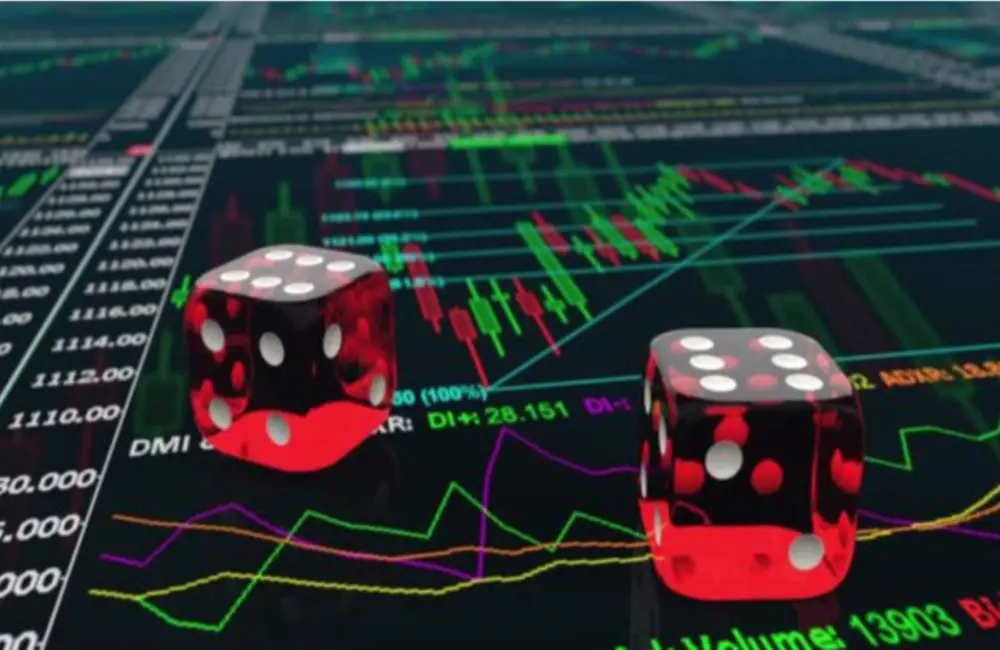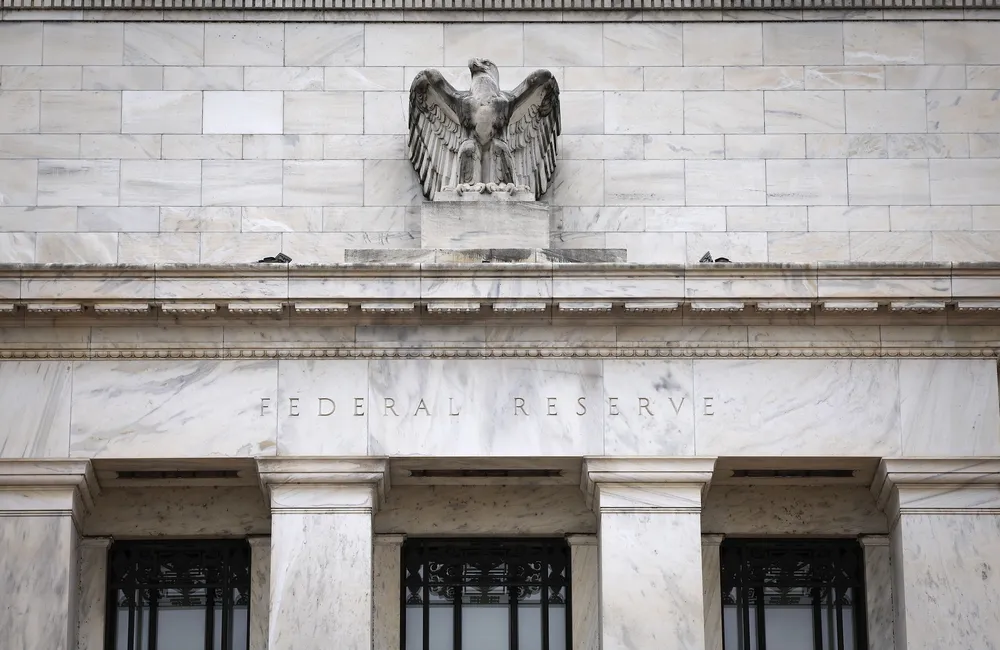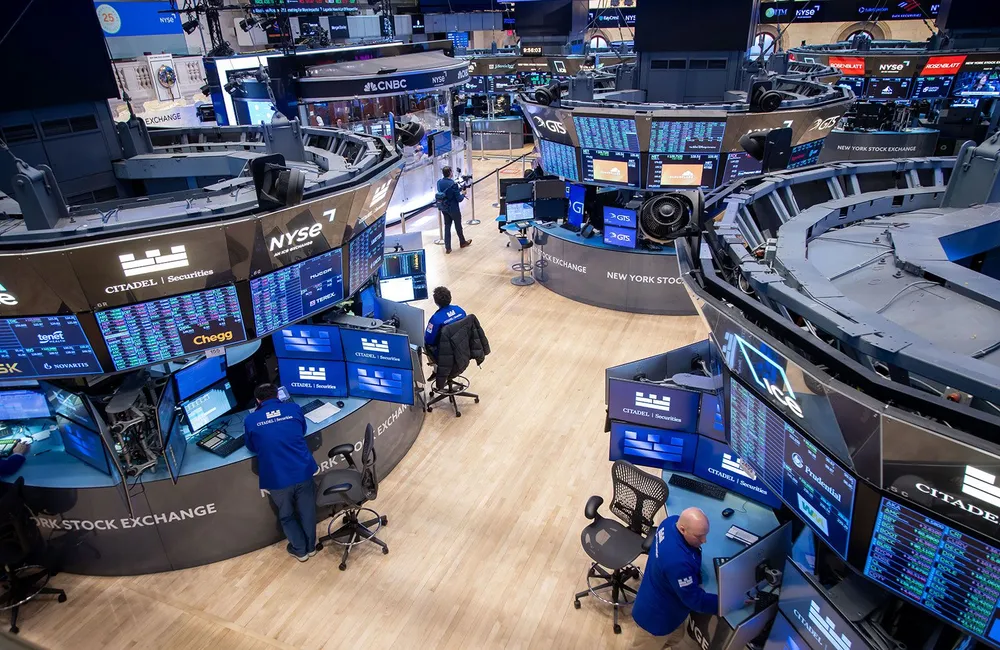ASX futures fell 42 points, or 0.6 per cent, to 7437 at 8.00 am AEST, pointing to a negative start to the day.
The S&P dropped 1.6 percent, while the tech-heavy Nasdaq Composite Index dropped 1.5 percent. A sharp rally in mid-March pushed both indexes to a positive close for the month during their worst quarter in more than two years. The S&P 500 has lost 4.9 percent this year, while the Nasdaq has dropped 9.1 percent. On Thursday, the Dow Jones Industrial Average was down 1.6%, for a 4.6% decline this quarter.
Oil prices drifted lower after US President Biden ordered the biggest ever release of oil stocks from the country’s strategic reserves. An estimated 180 million barrels will find their way to the global oil market over the coming six months in an effort to cool off rising costs at the pump and to give US shale producers time to backfill Russian supply. Brent Crude was down US$107.91 and 4.9 per cent.
Locally the S&P/ASX 200 inched 0.2% lower to 7499.6, breaking a seven-session winning streak with early gains fading on inflation jitters and no apparent progress in Russia-Ukraine negotiations.
The index was up 0.7% at the end of the quarter after a commodity fuelled boom left the index up 6.4% in March.
The ups and downs of the tech sector dragged the losses, down 2.2% with declines between 3.35% and 4.65% for Appen, Xero and Block.
The major banks NAB, ANZ, Westpac and Commonwealth lost 0.1% to 1.2%.
The materials sector limited the overall losses, gaining 1.5% on strength from iron-ore and gold miners. Rio Tinto, BHP and Fortescue gained between 1.9 per cent and 4.3 per cent and Evolution, Perseus and Silver Lake were up between 0.5 per cent and 1.9 per cent.
Industrials and consumer staples, as well as telecoms were up marginally.
In commodity markets, iron ore added 10 cents to US$158.30 a tonne; gold futures climbed 0.8% to $1954.
Bond markets stabilised overnight, and the yield on the US 10-Year Treasury Note dipped to 2.34%. The yield on Australia’s 10-year bond rose to 2.81%. Yields rise when prices fall.
The Australian dollar slipped and was fetching 74.83 US cents at 8.00 am AEST, a decline from the previous close of 75.09. The WSJ Dollar Index, which measures the US dollar against 16 other currencies, soared to 91.18 higher.
Asia
Chinese stocks ended the day lower as Shanghai’s lockdown weighed, as the city enters the fourth day of a two-stage temporary lockdown to contain Covid infections. The Shanghai Composite Index fell 0.4%, the Shenzhen Composite Index was down 0.9% and the ChiNext Price Index lost 1.4%.
China Vanke gained 0.9% even as its 2021 net profit dropped. Ganfeng Lithium fell 3.1% following the release of its 2021 earnings. Developments related to security may be in focus after the Solomon Islands signed a sweeping security agreement with Beijing on Thursday.
Separately, some gains could be in store for security-related stocks, as the Solomon Islands said Thursday it had signed a wide-ranging security pact with Beijing. Some analysts believe that this opens up a potential first Chinese military base in the South Pacific.
The Hang Seng Index in Hong Kong dropped 1.1 percent, following widespread declines in Asian equities. Asian markets look like they are following the US and Europe and correcting the knee-jerk rally we saw Wednesday, Oanda says.
China Overseas Land & Investment fell 1.9% after net profit for 2021 was squeezed by rising margin pressure and lower fair-value gains. Henderson Land declined 2.0% while Sun Hung Kai Properties slipped 1.7%. Shares of Cosco Shipping Holdings dropped 2.4% after the company warned that port congestion challenges and resurgent Covid-19 infections could create uncertainties for the market in 2022.
Japanese stocks finished lower, dragged down by declines in financial stocks, amid uncertainty about the war in Ukraine and its effect on global trade. Nomura Holdings fell 3.2%, and Sumitomo Mitsui Trust Holdings was down 3.1%. The Nikkei Stock Average dropped 0.7% to 27821.43. Investors stay glued to developments in the war in Ukraine after Moscow snubbed a diplomatic overture from Ukraine.
Europe
European markets declined as OPEC and allies rebuffed pleas to increase crude supply further than expected. The pan-European Stoxx Europe 600 lost 0.9 percent.
OPEC and allies such as Russia approved another modest monthly increase in oil output, resisting pressure to bring down prices by producing more. “OPEC opted not to turn the tide that could have seen the price of a barrel of Brent crude back into three figures,” says AJ Bell analyst Danni Hewson.
In London, the FTSE 100 closed Thursday down 0.60% in a painful finish to a challenging quarter, although it outperformed peers in the past three months.
“Of the ten major world indices only London’s blue chip FTSE 100 has come out of the last three months in better shape than when it went in thanks largely to miners and energy giants making hay in runaway commodity prices,” says AJ Bell financial analyst Danni Hewson.
Energy markets in London and the US were subdued on this final day of trades in March, with sanctions against Russia still distorting supply and Washington stepping up efforts to release stored oil to calm markets as a stop-gap, says Ms. Hewson.
North America
Stocks and oil prices fell Thursday, as President Biden readied a historic release of oil reserves to stem rising energy prices and inflation.
The S&P 500 dropped about 1.6 percent, following a Wednesday close that was down 0.6 percent. The Nasdaq Composite Index fell roughly 1.5 percent, and the Dow Jones Industrial Average dropped about 550 points, or 1.6 percent.
President Biden plans to draw on as many as 180 million barrels of government oil reserves over the next six months to combat rising energy prices in the wake of Russia’s invasion of Ukraine, the White House said Thursday.
That would mark the biggest release from strategic stocks on record, RBC Capital Markets said. Brent crude for May delivery, the global benchmark, fell 4.9 percent, to $107.91 a barrel.
Stocks ended a choppy first quarter on a mixed note. The S&P 500 made a comeback in recent days but still fell for the quarter.
Investors in recent days have been able to remain calm in the face of the ongoing Russia-Ukraine crisis, as well as to ignore new Covid-19 lockdowns in China. Instead, they are drawing strength from falling oil prices and hoping that inflation might moderate.
“This looks more like a large, more coordinated effort, one that might have more heft.” That is positive for markets as it means lower inflation and less impetus to be aggressive by central banks on interest-rate increases,” said James Athey, an investment manager at Abrdn. “It’s about relief, maybe removing a destabilizing factor” that is brought on by high oil prices.
The US and friends have tried bringing down prices by releasing strategic reserves before, but the effects are usually temporary. On March 1, members of the International Energy Agency approved the release of 60 million barrels, but on that day, Brent crude surged more than 7 percent.
The yield on the benchmark 10-year Treasury note fell to 2.324% from 2.357%, continuing a drop that has now lasted for a fourth day. Yields fall when prices rise. European government debt also rallied, with German 10-year yield dipping to below 0.6%.
In high inflation regimes, government bonds are usually low-performers as their fixed cash flows lose value due to a rise in prices.
The bond selloff is stabilized in recent days probably due to timing, investors say. Large asset managers typically rebalance their portfolios at the end of a quarter.
For the US yield curve, closely watched by many, the difference between the two-year yield and the 10-year yield shrunk to roughly 0.02 percentage point last Thursday, from about 0.9 percentage point in early January. If it turns negative, the yield curve would be inverted.
“That would be a recessionary indicator for us, but I don’t think we’re at the stage of panic yet,” said Arun Sai, a multi asset strategist at Pictet Asset Management. “We are on the cusp of a significant signal, but conversely things could come back around.”
US consumer spending ticked up 0.2% in February, boosted partly by higher prices but weaker than predicted. Jobless claims, a rough gauge of layoffs, totaled 202,000. That is a modest increase from the previous week, although at the lowest level since 1969, but still consistent with economists’ expectations amid a tight labor market.





















